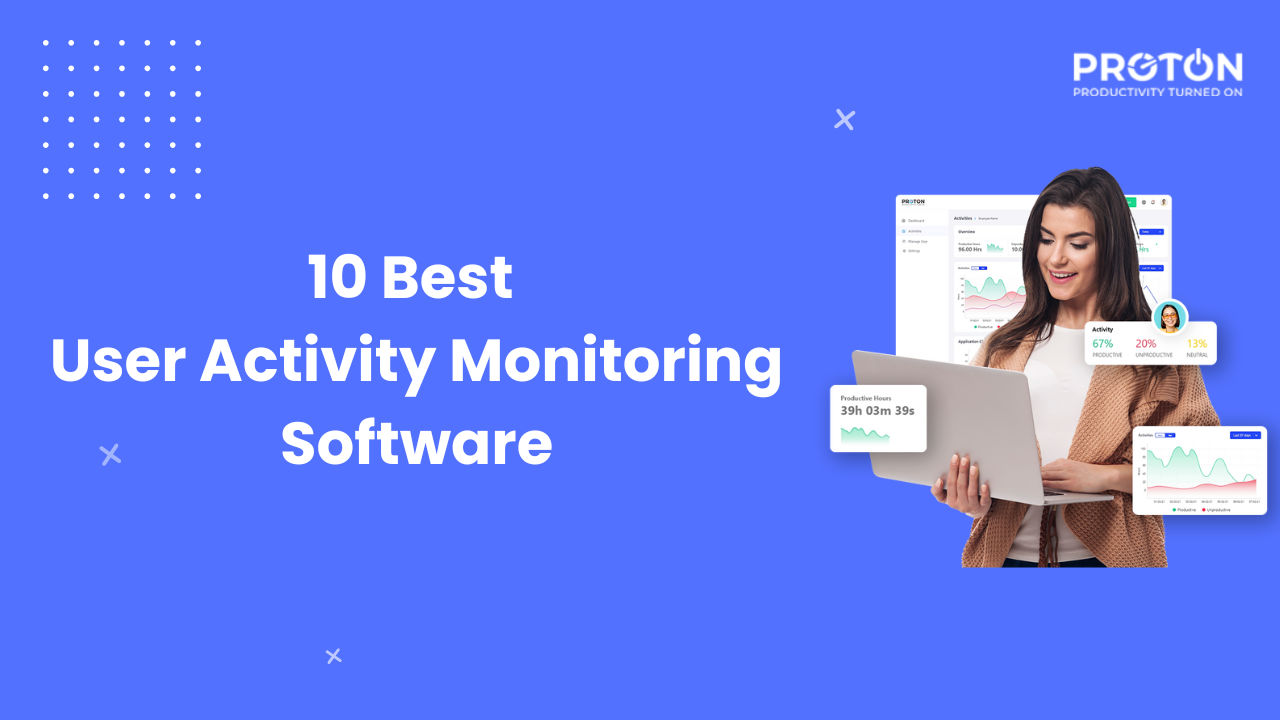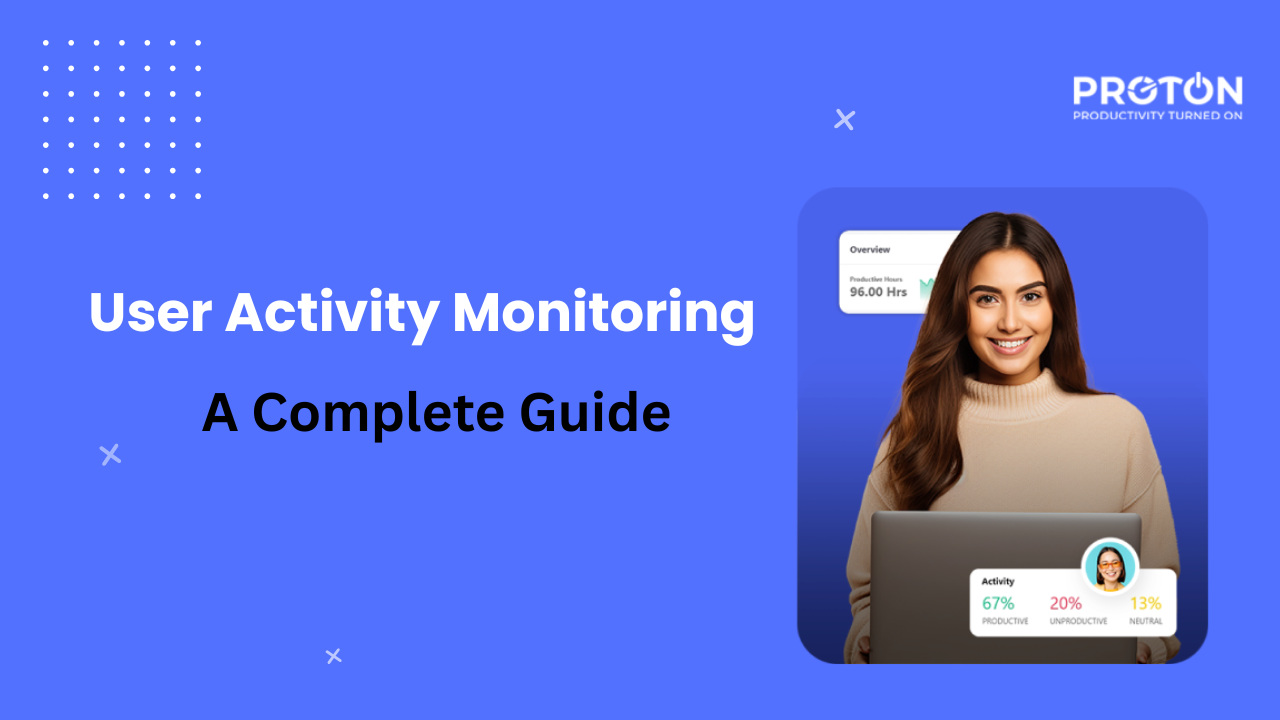Being productive in 2025 is no longer about working long hours, but about working smarter. Managers need to stay up-to-date with new tools, such as AI, automation, cloud platforms, and flexible work models, while also supporting employees’ well-being.
The right productivity tool will help teams perform their best rather than feel overwhelmed.
We will be exploring top productivity trends for 2025, leading tools like Proton and how managers can bring about changes in this fast-moving world.
Top Productivity Trends in 2025
- Result-focused Performance
Companies are measuring results rather than tracking time. With OKRs and result-based metrics, managers focus on what teams achieve and not how long they work
- AI-Powered Workflow
AI simplifies work by automating routine tasks and offering strategic insights for better decision-making. Tools like ChatGPT, Jasper and Motion auto-schedule tasks, generate instant reports, and track goals to help teams stay focused and efficient.
- Integrated data and dashboards
Productivity tools like Proton unify all work data, providing managers with clear, real-time updates on tasks completed and progress. Dashboards that are personalised help identify inefficiencies early.
- Asynchronous and Hybrid work
Since hybrid work is the new common, tools like Loom, Shared Docs, and Slack help people work together from anywhere with better communication and fewer meetings.
- Wellness at the workplace
Workplace wellness is now a big part of productivity. Stress tracking, break reminders, and flexible hours are certain features that help prevent burnout and maintain consistent performance
- Smart Automation
Specific tasks like time tracking and approvals are now automated, leaving enough time for teams to spend more on meaningful work
- Learning and upskilling
AI tools identify skill gaps and suggest targeted short courses, helping employees develop continuously in their specific roles
- Efficiency and sustainability
Organisations track energy use and improve systems using AI. This will help them work efficiently, reducing waste. The goal is to get the maximum work done with minimum impact on the environment
In 2025, productivity is equal to using smart tools efficiently, working flexibly and staying healthy. Managers will focus on clear goals, and the rest of the work will be automated.
Top Productivity Tools Managers Should Explore
In 2025, managers should have access to powerful tools to boost productivity and get better outcomes. Here are some of the best team productivity tools.
- Time and Activity Tracking
Tools like Proton, Clockify, and Hubstaff provide insights on how teams spend time. Proton also uses AI to categorise work and prevent burnout.
- Automation tools
To connect apps and automate tasks like turning emails into tasks, tools like Zapier and Make Connect can be used. When integrated well, these become powerful productivity and collaboration tools that save time and reduce manual effort.
- Project & Task Management tools
Asana, Trello, Jira, and ClickUp are tools that help teams plan, assign, and track work. These are some of the commonly used product management tools that help teams plan, assign, and track work efficiently.
- Team Collaboration
Platforms like Slack, Microsoft Teams, Zoom, Notion, and Google Workspace keep communication smooth.
- AI-Powered Assistants
AI productivity tools like ChatGPT, Claude, and Jasper help with writing, summarising, and coding too. These are some of the best AI productivity tools available for modern teams. Motion is also a powerful production tool for organising work schedules
- Sales Tools
Sales Productivity tools like Salesforce and HubSpot make lead tracking and follow-ups with potential customers easier.
- Productivity Suites
Tools like Google Workspace and Microsoft 365 act as comprehensive workplace productivity tools, combining communication, collaboration, and scheduling.
- Dashboards & Analytics
Tools like Power BI, Tableau, and Proton help managers monitor key data and identify patterns. These dashboards also support tools product management by helping product teams stay on top of goals and updates.
How Managers Can Lead the Change
Managers should possess strong leadership qualities, as identifying the right tools and trends that will fit in well with the team is not as easy as it seems. Here is how they can bring about change:
- Test and Improve
First, pick a tool and test with the team before rolling it out fully. Use feedback to improve the process, which will not overwhelm the team.
- Set the tone
Lead by using the tools yourself and sharing progress. Be transparent about how data is used to avoid worries about micromanaging.
- Train and Support
New tools can be hard to adapt to quickly. Provide training, guide and identify people who can learn quickly and help others. Display how each tool flawlessly fits into the work routine.
- Focus on clear goals and not hours
Managers need to be outcome-oriented and prioritise results over time. This will build clarity and trust.
- Customise Workflow
Adjust settings to reduce distractions and stay focused. E.g., Proton blocks sites to avoid getting distracted.
- Gather Feedback
Make sure to regularly collect feedback on what is working and what is not. Make changes when required to support changing team requirements.
- Focus on wellness
Supporting healthy work habits like encouraging breaks, flagging overwork, tracking burnout, and checking in when needed.
With clear direction and understanding, Managers can use these tools to boost productivity and not add additional stress.
Conclusion
Productivity in 2025 is all about balancing the usage of the best productivity tools and supporting people. The focus has shifted from tracking time to supporting well-being and results. Managers who focus on Flexible work, automation, result-oriented metrics and most importantly, employee wellness will build efficient and happier teams. Platforms like Proton provide a one-stop solution to boost employee performance without micromanaging. By choosing the right productivity tools for work and introducing them gradually, you can create an efficient and empowered workplace.
FAQs
What are the top productivity trends in 2025?
Major productivity trends in 2025 include:
- AI-driven workflows.
- Performance tracking based on outcome.
- Hybrid and time-independent work model.
- Personalised dashboards.
Productivity tools with a built-in wellness feature.
Which productivity tools are best for modern managers in 2025?
It entirely depends on the need, but managers generally use a wide range of tools, like:
- Proton, Toggl, and RescueTime for time tracking
- Communication hubs like Slack, Notion, Microsoft Teams,
- Project management tools like Asana, Jira, Trello
- AI tools like ChatGPT for drafting
- Zapier for automation
- Sales tools like Salesforce
Of all this, Proton stands out as a complete team productivity tool,
How can AI tools improve team productivity?
Using AI tools for productivity helps teams work faster and smarter. They can:
- Automate routine tasks like generating reports and summarising meetings
- Categorise work automatically
- Identify key productivity trends
AI provides real-time insights that help managers make better decisions and focus on important tasks.
What does outcome-based performance tracking mean?
Outcome-based performance tracking means measuring success by outcomes like goals or key results rather than tracking hours or the number of tasks completed. It enables employees to focus on what is important and stay aligned with company goals.
How do asynchronous tools help in remote collaboration?
Asynchronous tools allow employees to work and share ideas through messages, shared documents, or videos when it works best for them. This helps teams stay connected, avoid excess meetings, and continue working on projects, though they are in different time zones.
Why is employee wellness being tied to productivity trends?
Burnout harms both performance and retention. In 2025, companies have come to notice that healthy employees perform better in the long run. So, organisations have started prioritising employee well-being. Popular tools like Proton have wellness features like stress detection, reminders for breaks and flexible time to support employees and prevent burnout.
What is a personalised productivity dashboard?
A personalised productivity dashboard is a customised view showing key data like goals, tasks or time tailored to what your team needs to track.
How can managers adopt new tools without overwhelming their teams?
The secret is to bring about a gradual, thoughtful change.
- Involve the team in selecting tools and implement them gradually.
- Pick one core feature and offer training that gives them space to adjust.
- Explain how each tool will help them with their daily work
- Provide dashboards and ownership
- Encourage feedback
Communicate that the aim is to make work easier and not to micromanage; this will help them adopt new tools without feeling overwhelmed.
Recommended Readings:
- 10 Best User Activity Monitoring Software in 2025
- User Activity Monitoring 101: A Complete Guide
- Balancing Work and Life: Time Management Tips for Remote Employees
- Workforce Analysis 101: Understanding the Basics and Benefits
- Why Employee Monitoring Software is Crucial in 2025
- How to Introduce Productivity Monitoring in Your Organization: A Comprehensive Guide
- 10 Best Employee Productivity Tracking Tools 2025
- How to Track Employee Productivity Without Micromanaging


